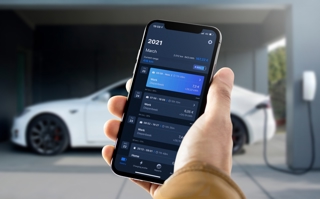Almost one in four drivers (23%) are ready to make the switch to an electric vehicle (EV) within the next five years, new research from Volkswagen Financial Services UK (VWFS) suggests.
However, the study has also revealed a generational divide, with people under the age of 45 more likely to be driving an EV by 2026 (32%) compared to people over the age of 45 (18%).
Those aged between between 25 and 34 were the most likely to make the switch to electric power (35%), with people aged between 18 and 24 the second most likely age group (34%).
Mike Todd, CEO at VWFS, said: “The Government has said it will ban the sale of diesel and petrol engine cars by the end of the decade, which provides a clear timescale for manufacturers, retailers, and finance providers to make the switch to electric vehicles for motorists as convenient and desirable as possible.”
The research, which was conducted to coincide with Earth Day (April 22), also reveals that one in five (20%) people plan to invest in an electric car charging point at home within the next five years.
However, homeowners younger than 45 are more than twice as likely to invest in such a feature (30%) than homeowners aged over 45 (13%).
Todd continued: “It’s fascinating to see that one in five people are likely to invest in a car charging point at home in the next five years, which signals a clear direction of travel towards more widespread adoption of electric vehicles.”
Regionally, people living in the South East say they are most likely to be driving an electric vehicle within five years (28%), followed by people in the Midlands (24%).
In the North of England, 18% of respondents said they’re likely to be driving an electric vehicle within five years – the lowest percentage of any region.
Falling cost of lithium-ion batteries
A separate study from Boston Consulting Group suggests that expect that 47% of all new light vehicles sold globally in 2025 will be fully electric or hybrid.
This transition—especially to all-electric vehicles—will occur more quickly in the EU and China than other major markets, while electrification may occur relatively slowly in large developing nations such as Brazil and India, it says.
Globally, sales of plug-in hybrid (PHEVs) and battery electric vehicles (BEVs) were especially strong last year. Their share of the light vehicle market rose to 2.2% in 2020 in the US, 5% in China, and an impressive 9.3% in the EU, where sales of plug-ins in the fourth quarter surged by 230% over the comparable period in 2019.
In addition to robust incentives, sales growth has been propelled by the falling costs of lithium-ion batteries, says Boston Consulting Group.
Batteries are the most expensive component of EVs, accounting for 20% to 30% of total cost. The average cost of a nickel-rich battery pack fell below $150 (£107) per kilowatt hour (kWh) in 2020 for leading players—$20 (£14) below what Boston Consulting Group had expected in late 2019.
The price fall can largely be attributed to innovation in cell chemistry and pack assembly, greater production scale, and improved manufacturing processes, it says.
Regardless of the market, rapidly declining battery costs, tougher government regulation, and the introduction of new EV models will continue to be the primary drivers of the shift, the study suggests.























Login to comment
Comments
No comments have been made yet.